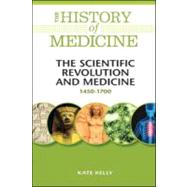
| Preface | p. viii |
| Acknowledgments | p. xii |
| Introduction | p. xiii |
| Medicine: Ready For A New Start | p. 1 |
| Galenic Medicine Still Prevails | p. 4 |
| Two Other Practices of the Day | p. 6 |
| Paracelsus Leads the Way | p. 8 |
| New Discoveries Challenge Old Ideas | p. 11 |
| Leonardo da Vinci (1452-1519): Contributions to Medical Knowledge | p. 13 |
| An Understanding of Proportions | p. 18 |
| How the Invention of the Printing Press Contributed to Medicine | p. 19 |
| Conclusion | p. 20 |
| Amazing Advances In Anatomy | p. 21 |
| Vesalius and What He Learned about the Structure of the Human Body | p. 23 |
| De humani corporis fabrica libri septum | p. 26 |
| Serveto Recognizes Pulmonary Circulation | p. 28 |
| Realdo Colombo Further Illuminates the Blood | p. 30 |
| Falloppio and His Discoveries | p. 31 |
| Bartolomeo Eustachio: Founder of Modern Anatomy | p. 33 |
| Santorio and the Body as Machine | p. 36 |
| Conclusion | p. 38 |
| Amazing Advances In Surgery | p. 39 |
| The Father of Modern Surgery | p. 41 |
| A Change in Weaponry Necessitates a Change in Wound Care | p. 43 |
| Paré Implements Many Advances | p. 46 |
| Debunking Popular Medicines of the Day | p. 48 |
| Other Notables in the Field of Surgery | p. 48 |
| Midwifery Is Improved | p. 54 |
| Surgery Achieves Greater Respect | p. 56 |
| Conclusion | p. 58 |
| William Harvey Transforms Understanding of The Circulatory System | p. 59 |
| Earlier Theories of the Blood (Pre-Harvey) | p. 60 |
| An Islamic Physician Provides Other Answers | p. 62 |
| Harvey Breaks New Ground | p. 63 |
| Reaction to Harvey's Theories | p. 66 |
| A Remaining Question Answered by Malpighi | p. 67 |
| On Embryology | p. 68 |
| The Study of Physiology Grows | p. 70 |
| Conclusion | p. 73 |
| The Microscope and Other Discoveries | p. 74 |
| The Development of the Microscope | p. 76 |
| Leeuwenhoek and His Lenses | p. 79 |
| Robert Hooke: Forgotten Genius | p. 81 |
| Living Things from Nowhere | p. 82 |
| Hooke's Work in Microscopic Matters | p. 84 |
| The Rise of Scurvy | p. 87 |
| Smallpox Takes on New Virulence | p. 89 |
| Conclusion | p. 91 |
| Syphilis and What It Reveals of The Day | p. 92 |
| Syphilis | p. 93 |
| The Possible Origins of Syphilis | p. 95 |
| How the Disease Came to Be Called Syphilis | p. 96 |
| Treatment Theories | p. 99 |
| Early Concept of Contagion | p. 100 |
| Famous Rulers Thought to Have Had the Disease | p. 101 |
| Public Policies to Help Reduce Syphilis | p. 102 |
| U.S. Study of Syphilis: A Dark Chapter | p. 103 |
| Conclusion | p. 105 |
| The Impact of The New World on Medicine | p. 106 |
| The New World Influences Medicine | p. 108 |
| What the Native Americans Knew | p. 110 |
| Trade Affects Both Sides | p. 111 |
| Medicines from Overseas | p. 111 |
| Opium as a Medicine | p. 114 |
| Health Care for the Common Man | p. 117 |
| Conclusion | p. 121 |
| Scientific Progress on An Imperfect Path | p. 122 |
| The English Hippocrates | p. 123 |
| Alchemy Wanes: Ideas Such as Phrenology Take Root | p. 125 |
| Connecting Certain Jobs to Certain Diseases | p. 126 |
| The Foundations of Public Health | p. 129 |
| Doctored to Death | p. 130 |
| Sanitation during These Years | p. 132 |
| Care of the Sick | p. 134 |
| Conclusion | p. 135 |
| Chronology | p. 136 |
| Glossary | p. 139 |
| Further Resources | p. 145 |
| Index | p. 150 |
| Table of Contents provided by Ingram. All Rights Reserved. |
The New copy of this book will include any supplemental materials advertised. Please check the title of the book to determine if it should include any access cards, study guides, lab manuals, CDs, etc.
The Used, Rental and eBook copies of this book are not guaranteed to include any supplemental materials. Typically, only the book itself is included. This is true even if the title states it includes any access cards, study guides, lab manuals, CDs, etc.
Excerpted from The Scientific Revolution and Medicine, 1450-1700 by Kate Kelly
All rights reserved by the original copyright owners. Excerpts are provided for display purposes only and may not be reproduced, reprinted or distributed without the written permission of the publisher.